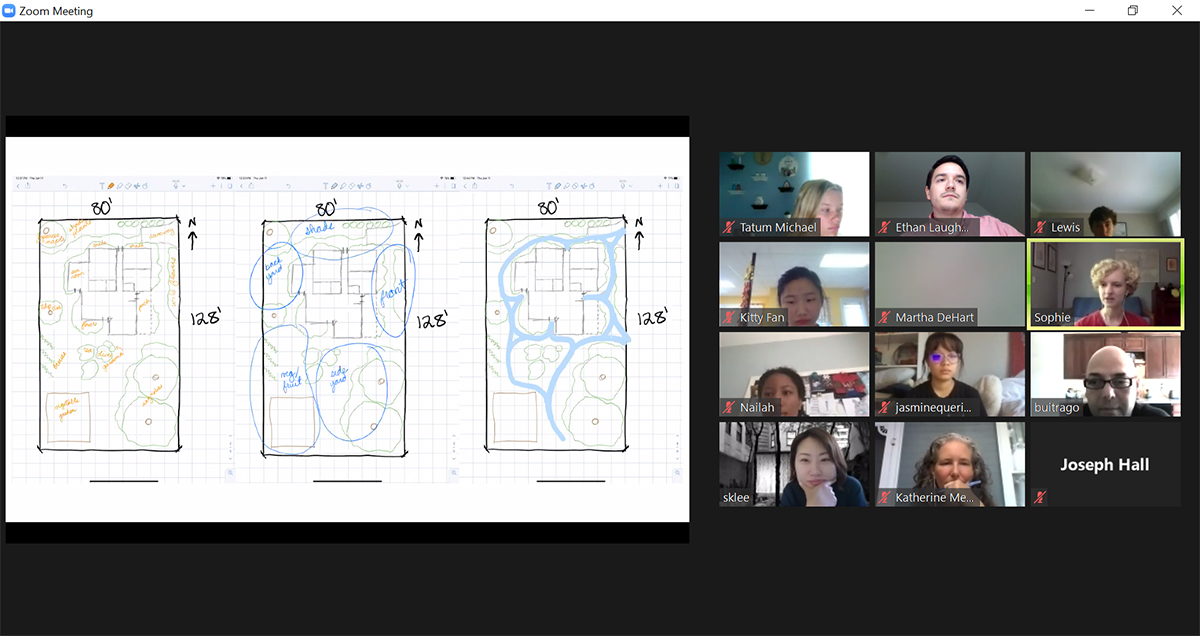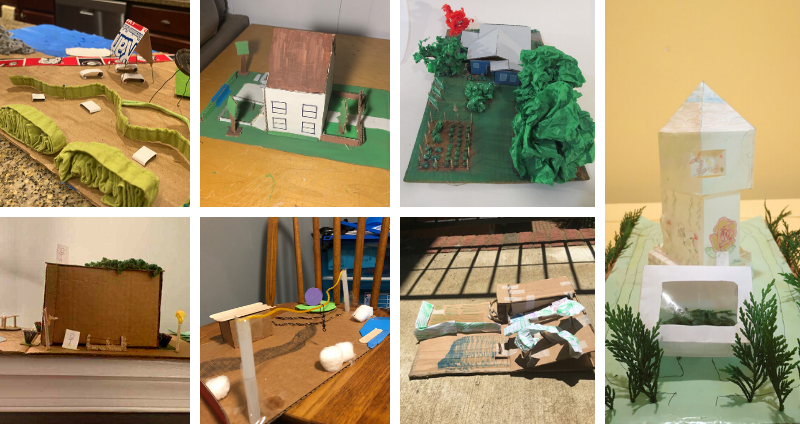In June, the College of Environment Design held its first-ever Design Camp, a weeklong immersive and collaborative experience for rising high school seniors interested in landscape architecture. Design Camp, free of charge to admitted applicants and made possible by a New Approaches to Diversity and Inclusion Grant, was originally meant to show prospective students a glimpse into the life of a full-time Bachelor of Landscape Architecture (BLA) student by living in residence halls, learning from faculty, touring notable sites, and working on design projects.
Because the coronavirus pandemic prevented this initial vision from coming to fruition, Design Camp was adapted to take place in a virtual format. Many activities, Q&A sessions with CED faculty and staff, demonstrations, and discussions introduced participants to the many areas of interest within the field of landscape architecture such as plant identification, storm water management, and designing for clients. Key changes had to be made due to the inability to bring students onto campus, but the end result was nonetheless informative, engaging, and memorable.

Demonstration of Digital Graphics led by Professor Jessica Fernandez.
This “crash course” in landscape architecture delved into the field’s many specialties. The week’s first meeting introduced students to professionals from industries related to landscape architecture including Geographic Information Systems, interior design, and designing for private design firms. Insight from such a range of professionals exposed participants to the many career paths possible through an education in Landscape Architecture.
Several CED alumni and faculty entered the meetings for guest presentations and lectures. The week included speakers such as Juan Guzman-Palacios, a CED alum and current designer at SCAPE in New York City, to talk about a design project currently in the works. Later in the week students were led along a plant identification walk, a tour of UGA’s North Campus focusing on urban design, and a tour of Marie Sims Park in Buckhead, the latter being a standout example of storm water management in action.

A student presents her “My Place” project.
The project most central to the week was the students’ “My Place” project. This project asked students to create a model of a space of their own design using household materials and found objects. These “rip and tear” models were built to scale and incorporated some of the lessons learned throughout the week in order to create truly unique spaces. After students presented their projects, three CED faculty provided constructive feedback in a mock critique format to give the Design Camp participants a taste of what an actual critique process is like for typical BLA students.

The students presented their “My Place” rip and tear models on the final day of Design Camp and were critiqued by CED faculty.
DesignCamp also introduced students to the UGA campus and services. Most participants were residents of Athens or had visited campus, but had not received an in-depth look at UGA beyond informal campus tours. Students were introduced to UGA’s campus services, university history, the application process, and UGA’s most scenic areas including the Founders Garden and North Campus. One participant responding to an anonymous survey sent out after Design Camp reported that “[…] the camp offered everything I really needed to know about college admissions and the UGA campus had to offer.” The survey results also revealed that all respondents are likely to apply to UGA and choose the BLA as their major.

A presentation from UGA Admissions. A survey of the student participants reports that all respondents expect to apply to UGA and are likely to choose the BLA as their major.
Although the move to an online format presented unique challenges, the Design Camp team gathered valuable takeaways to implement in the next Design Camp, which will take place in person if all goes according to plan.
First, the team plans to include more video calling. The CED’s associates and alumni live across the US and abroad, and the recent normalization of video calling due to many employees transitioning to remote work simplifies the process of including guest speakers far from Athens. Second, the team has a better idea of what participants were looking for in Design Camp. While landscape design at large was and is Design Camp’s focus, the team found that students were just as interested in the engineering aspects of landscape architecture as they were in hand graphics and plant identification. Third, there will be a greater emphasis on hands-on learning, as participants enjoyed sessions where they could join the discussion by presenting their own ideas and models.
The CED Design Camp team is proud of each and every high school student who participated in the inaugural 2020 Design Camp and hopes that future Design Camps can build on its success. The cooperation of dozens of CED faculty, staff, alumni, students, and design professionals made Design Camp possible, and the CED is excited for what Design Camp 2021 will bring.
To find out more about the BLA program, click here.

